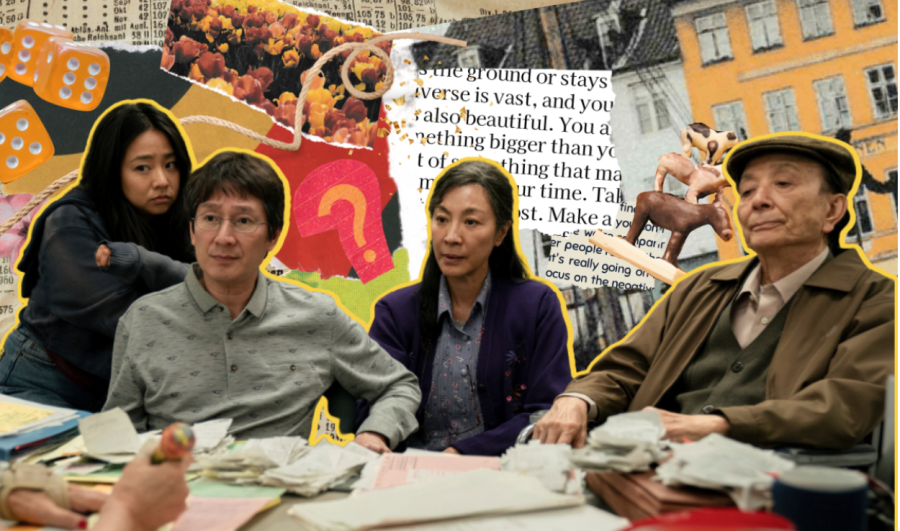Philosophy, fun, and hyperactive delight: “Everything Everywhere All At Once” on optimistic nihilism
The chaotic Everything Everywhere All At Once balances the whirlwind of the multiverse and showing the impact on first generation immigrants in a way that is exhilarating and thought-provoking.
Released on March 30th, Everything Everywhere All At Once is a vivid deep dive into the multiverse and its effects on a single Asian family.
The Story
Evelyn Wang is under massive pressure. Her laundromat is being audited by the IRS, her husband Waymond is pursuing a divorce, and her daughter Joy has brought her girlfriend to meet Evelyn’s traditionally-leaning father, Gong Gong.
But that’s only the start of her troubles after she discovers the existence of the multiverse—and her role in its preservation.
In her journey to stop Jobu Tupaki—a powerful being with the ability to “verse jump” at will—Evelyn must connect with parallel versions of herself, creating a genre-bending two hours mixing martial arts, fantasy, and science fiction.
Everything
With so much going on, it’s no wonder that opinions on the movie are all over the place.
Simply put: it’s messy. Scenes jump from universe to universe in a matter of seconds, and viewers can easily be left behind by the screenplay’s chaos.
The movie’s anarchic nature barely lets up, leading it to feel like “nothing nowhere over a long period of time” for many, according to The Guardian. Of course, the movie does its best to thwart this early on. The first third of the movie throws out explanation after explanation, with Evelyn’s confusion used to piggyback the audience’s.
But as explanations and worldbuilding take priority, character relationships are left on the sidelines, taking emotional dimension away from a plot that resolves sentimentally.
Everywhere
Even the world-building itself falls short, with some viewers complaining about the limited scale of the depicted multiverse. For a movie on everything, everywhere, shots are centered around six main Evelyns—and whether the blame falls on cinematic limits or story writing shortcomings is debatable.
The movie isn’t for everyone. But overlooking the occasional confusion or profanity, the movie’s loud exterior belies a certain profoundness.
The movie’s messiness offers a poignant reflection of life itself—that is, life’s strange, incomprehensible, and chaotic nature. Evelyn’s many roles parallel the many roles everyone possesses in their own lives; the relentlessness of her life illustrates the unbearable weight those roles can have.
All At Once
She is a mother, a wife, a business owner, and suddenly, the savior of the universe. She is also a middle-aged woman grappling with failed hopes and dreams. Often, she feels as if she is under pressure from everything, everywhere, all at once. It’s a universal struggle, one that lends relatability to an otherwise baffling premise.
“I feel like the craziness of the movie just made it better, so even when I felt bewildered it was more of a good experience than a bad one. It’s one of the best movies I’ve ever seen,” said Sophia Stomhagen (‘24).
Optimistic nihilism comes into play, countering, or perhaps furthering, Jobu’s cynical “nothing matters” philosophy with “if nothing matters, we can choose what matters.”
“I think the main point of the movie is optimistic, and that its biggest lesson is to appreciate the little things in life,” said Amador music teacher Edwin Cordoba.
Even seemingly humorous additions even have significant implications. The everything bagel is a literal representation of the little things mattering.
Verdict
In a whirlwind of hyperactive, universe-hopping fun, Everything Everywhere All At Once weaves a colorful story of motherhood, philosophy, and the struggles of first-gen immigrants—one as fun as it is profound.
Your donation will support the student journalists in the AVJournalism program. Your contribution will allow us to purchase equipment and cover our annual website hosting costs.

